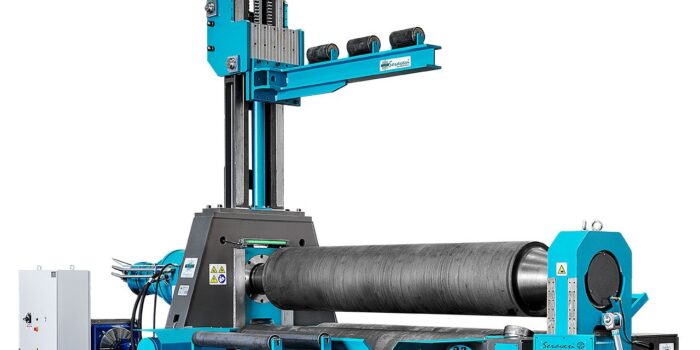In today’s industrial landscape, the hydraulic plate bending machine stands out as one of the most important tools in metal fabrication. It enables manufacturers to shape metal sheets and plates into precise curves and angles, making it indispensable for industries such as construction, shipbuilding, energy, and heavy machinery. With the increasing demand for accuracy, strength, and customization, this machine has become a vital asset for any fabrication facility looking to maintain a competitive edge.
- How a Hydraulic Plate Bending Machine Works in Practice
- Industries That Rely on the Hydraulic Plate Bending Machine
- Why the Hydraulic Plate Bending Machine Outperforms Traditional Methods
- Choosing the Right Hydraulic Plate Bending Machine for Your Facility
- Maintenance Tips for Hydraulic Plate Bending Machine Longevity
How a Hydraulic Plate Bending Machine Works in Practice
A hydraulic plate bending machine functions by using hydraulic cylinders to apply force through a set of dies or rollers. This pressure bends the metal into the desired shape, whether a simple angle or a complex curve. The use of hydraulics allows operators to control the force and speed with precision, resulting in highly accurate bends. Depending on the application, different configurations — such as three-roll or four-roll machines — are used. Operators can adjust settings based on thickness, material type, and desired radius, ensuring flexibility across various tasks.
Industries That Rely on the Hydraulic Plate Bending Machine
Numerous sectors depend on the hydraulic plate bending machine for reliable performance. In construction, it is used to form beams, columns, and metal frameworks. Shipbuilding requires these machines to bend thick steel plates used in hulls and superstructures. In energy and utilities, bending machines fabricate enclosures, supports, and casings for power systems and pipelines. Automotive manufacturers benefit from the machine’s ability to shape high-strength steel with precision, while metal artists and furniture makers use it to create clean, modern designs. Its versatility makes it a standard in both high-volume manufacturing and small custom shops.
Why the Hydraulic Plate Bending Machine Outperforms Traditional Methods
Compared to manual tools or mechanical press brakes, the hydraulic plate bending machine offers superior control and consistency. Manual systems lack the strength to bend thicker metals, while mechanical alternatives often struggle with repeatability. Hydraulic machines apply even pressure, which results in cleaner bends and less material stress. They are also easier to adjust for various tasks, saving time during setup and reducing waste from trial and error. For high-precision or high-volume jobs, the hydraulic system is both faster and more energy-efficient, making it the smarter long-term investment.
Choosing the Right Hydraulic Plate Bending Machine for Your Facility
Selecting a hydraulic plate bending machine requires careful consideration of your operational needs. Key factors include the thickness and type of metal you’ll be working with, the maximum bending width, and whether automation is necessary. Facilities handling frequent or complex jobs may benefit from a CNC-enabled machine, which can store multiple programs and adjust automatically for different bends. For more basic applications, a manual or semi-automatic model may suffice. Support and service are also critical — choosing a trusted brand with a strong network of technicians ensures long-term reliability and performance.
Maintenance Tips for Hydraulic Plate Bending Machine Longevity
Maintaining a hydraulic plate bending machine properly can extend its life and improve overall efficiency. This includes checking hydraulic fluid levels regularly, inspecting seals and hoses for wear, and cleaning or replacing filters as needed. Lubricating moving parts and recalibrating the system on schedule helps maintain accuracy. Operators should also be trained in daily inspections and safe usage practices. Preventative maintenance not only reduces downtime but also minimizes repair costs and extends the machine’s productivity over its lifespan.
The hydraulic plate bending machine is a cornerstone of modern fabrication, offering precision, power, and versatility across a wide range of industries. By understanding how it works, choosing the right configuration, and keeping it well maintained, businesses can significantly boost their productivity and product quality. As demands for custom metalwork and structural strength continue to rise, this machine will remain a key part of any advanced manufacturing operation.

